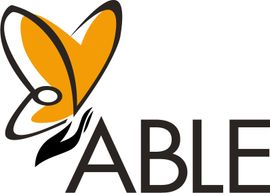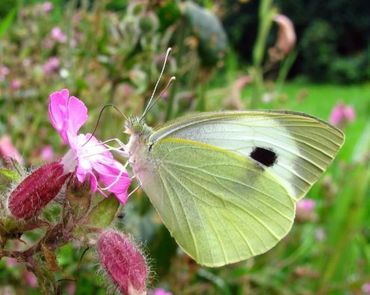ABLE project
Assessing ButterfLies in Europe (ABLE)
2018-2020

Project summary
The main aim of the ABLE project was to create a representative butterfly monitoring network across as many countries as possible, in order to improve the targeting and efficiency of conservation measures within the European Union. To do this, it developed a suite of indicators that can inform EU biodiversity and land use policies, including the Common Agricultural Policy. The data will also be used to assess the health of Europe’s pollinators as part of the EU Pollinator Initiative.

The project involved thousands of volunteers across Europe who contribute data in a standardised way into a central database (the European Butterfly Monitoring Scheme - eBMS). Building on the Butterfly Monitoring Schemes that were already running in 20 countries, the ABLE project established new schemes in a further 10 countries: Portugal, Italy, Hungary, Austria, Cyprus, Croatia, Czech Republic, Malta, Bulgaria and Poland.
The ABLE project was a partnership between Butterfly Conservation Europe, the Centre for Ecology and Hydrology (UK), the Helmholtz Centre for Environmental Research (UFZ, Germany), Dutch Butterfly Conservation and Butterfly Conservation (UK). It was funded by a service contract from the European Union Directorate General for the Environment, for an initial period of two years from 2018-20.
Specific tasks

-
Produce policy-relevant butterfly indicators for a range of habitats, analyse results and disseminate findings to policy makers and the public;
-
Support and develop a unified, sustainable and cost-effective European butterfly monitoring network based on trained volunteer recorders, supported by new coordinators, together with local access to an on-line data recording system;
-
Construct a unified, high-quality butterfly database and automated data entry system for the indicators.
Following the completion of the ABLE project, the project partners will continue to work closely with volunteers, partner organisations, land owners and managers, National Park Authorities, EU Institutions and EU Member State Administrations to engender their support for butterfly monitoring. This support, together with tangible infrastructure and support provided through this project, will give a strong signal of the ambitions of the EU and its Member States to develop sustainable butterfly monitoring to deliver key biodiversity indicators.
Recommendations for future eBMS
-
Establish new butterfly monitoring schemes, with coordinators and networks of volunteers in the 6 EU countries that have no scheme at present;
-
Some further development of fledgling schemes, established by the ABLE project in 10 EU countries, to increase their sustainability and encourage their contribution of data to the expanding eBMS database;
-
Hold workshops for existing and new eBMS partners to exchange experiences, share learning and encourage ongoing engagement post 2020;
-
Recruitment and training of more coordinators and volunteers across Europe who are willing to collect butterfly data from the field and report it to the newly developed online database for monitoring data;
-
Increases in the number of transects walked each year and butterfly records submitted;
-
Regular feedback to volunteers and recorders in EU Member States to foster continuing commitment;
-
An expanded and improved centralised eBMS database with greater functionality, including more butterfly records and providing automated methods for calculating a range of butterfly indicators;
-
Legal data sharing agreements for new eBMS partners, based on those covering existing schemes
Outcomes
More information is available on the eBMS website: https://butterfly-monitoring.net/able. All the results and outcomes are summarised in the reports below and an interactive Policy Brief:
- Executive Summary (pdf in English)
- Report Task 1 - Butterfly Indicators (pdf in English)
- Report Task 2 - Network Development (pdf in English)
- Report Task 3 - Tools (pdf in English)
- ABLE Policy Brief (pdf in English)
